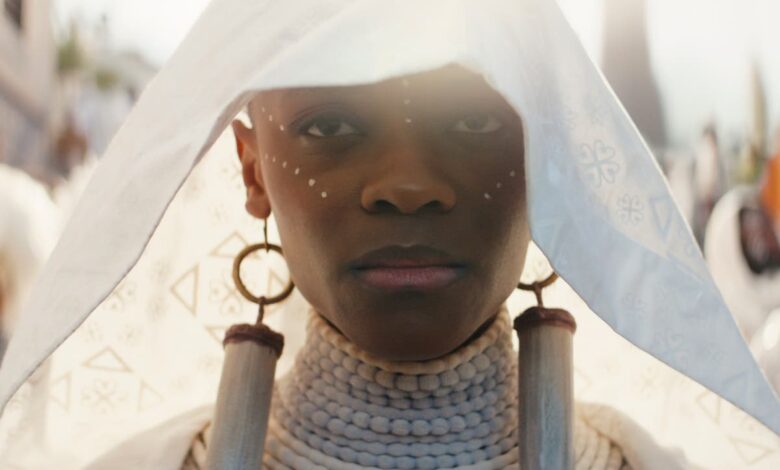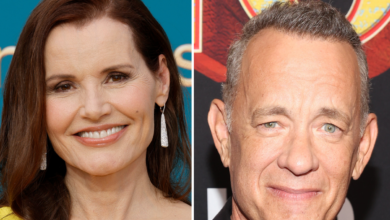Black Panther: Wakanda Forever, review: Chadwick Boseman’s shadow looms large in emotional sequel

Beyond the spectacle of Black Panther: Wakanda Forever, a single truth rings out: Chadwick Boseman was deeply loved. Ryan Coogler’s Black Panther (2018), intended to be Boseman’s solo debut as T’Challa, was a rare cultural game-changer. The film marked the most expansive and mainstream representation of Black talent in front of and behind the camera. And Boseman stood right at its centre, a force of charisma and introspection.
Everything about this sequel – filmed in the aftermath of Boseman’s death in August 2020 – feels subsumed under a great shadow of loss. Wakanda Forever isn’t necessarily a film about grief, but every frame is draped in tender sorrow. We first hear the whispered tones of Shuri (Letitia Wright), T’Challa’s sister, as she vows to save her brother from an unspoken and sudden illness. Her inability to do so becomes her burden. Others in the film – his mother (Angela Bassett’s Ramonda), his love (Lupita Nyong’o’s Nakia), and his most loyal soldier (Danai Gurira’s Okoye) – carry their own. Grief is multicoloured in Wakanda Forever, processed through spirituality, denial, and rage. But each iteration of it is laced with real pain.
These women all seek some serenity in their grief, but there’s little room for it here. Now that Wakanda has revealed itself to the world, nations seek out the source of its riches – vibranium, a metal stronger than any other. Wakanda may be able to protect itself, but the hunger of Western powers is insatiable, and they scour the Earth for other sources of that same ore – which, in turn, leads them to intrude upon another secretive, wealthy nation: the people of Talokan, direct descendants of the Mayans, who now live deep in the ocean’s waters. They are ruled over by a mutant (Tenoch Huerta) referred to as the feathered serpent god K’uk’ulkan. To his enemies, he is known as Namor.
Namor blames the late T’Challa for the sudden risk his people face. And to assure Wakanda’s loyalty, he demands its people aid him in his quest for vengeance against the MIT student incidentally responsible for exposing Talokan to the world – Riri Williams (Dominique Thorne, in a strong debut to the MCU), a tech prodigy set to receive her own spin-off series, Ironheart, on Disney Plus. There are many faces, both familiar and unfamiliar, to be introduced in Wakanda Forever. Whatever its personal aims, the film must continue spinning the web designed by Marvel Studios president Kevin Feige. In a strange way, there’s a similar feel here to the Star Wars prequel Rogue One. The 2016 blockbuster wasn’t quite sure how to introduce its gigantic roster of characters. The result desperately needed another few months in the editing booth, and yet it was completely satisfying on an emotional level.
The key to Wakanda Forever, it turns out, is silence. Sometimes that silence is literal. Other times, Coogler intentionally slows the pace so that his characters are given room to process. Bassett, Wright, Gurira, perpetual scene-stealer Winston Duke, and any number of the cast, live authentically inside their characters. It’s in stark opposition to how these films (see: Andrew Garfield in Spider-Man: No Way Home) tend to work, where an actor’s part only feels impressive if they can shout – sometimes metaphorically, sometimes not – above all the noise.
As an antagonist, Namor follows on directly from Black Panther’s Killmonger (Michael B Jordan). He circles many of the same ideological ideas: isolation, cooperation, vengeance, self-determination, aggression and defence. But Wakanda Forever expands rather than restates, offering a mainstream film that’s rich enough in its ideas to encourage sincere discussion about resource control and how formerly and currently colonised countries can envision their own futures.
Coogler’s film is certainly not without the occasional dodgy bit of CGI – that is a prerequisite for belonging to the MCU, it seems. But there’s more than enough wit, beauty and imagination in Wakanda Forever to outweigh its weaknesses. That accomplishment is shared equally between Coogler, cinematographer Autumn Durald Arkapaw, production designer Hannah Beachler, and costume designer Ruth Carter. Together, they present an arresting series of images: a mother cradles her baby in shallow waters, lit by a few rays of sunlight. A house burns, its flames licking the sky. A coat splays out in crinkled shades of yellow and blue, like the sun bleeding into the sea. Although questions of life and legacy are not always explicitly written in Wakanda Forever, they haunt the film in its most poignant vignettes.
‘Black Panther: Wakanda Forever’ is out in cinemas on 11 November





